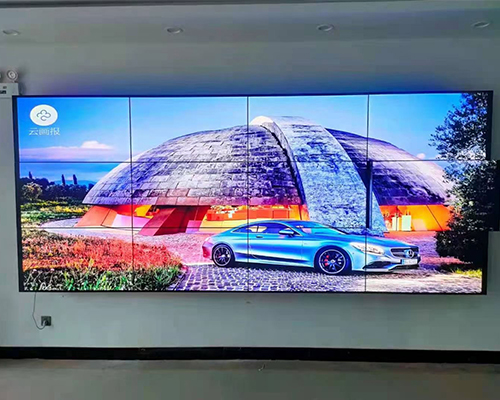pretty LCD video wall
1. patchwork
This is easy to understand. It refers to the width of the hemming between the two screens, that is, the double-sided seam. At present, the main seams of LCD splicing screens are 0.88mm and 3.5mm.
2. Backlight type
The display panel of the LCD splicing screen is composed of two pieces of glass with a layer of liquid crystal molecules sandwiched between them. The reason why images can appear on the LCD screen is because by controlling the brightness of the backlight, the degree of rotation of the liquid crystal molecules can be changed, thereby achieving light transmittance. control, ultimately forming a visible image. Currently, the most commonly used LCD splicing screens on the market are LED backlights because they are brighter, present clearer images, consume less power, and are energy-saving and environmentally friendly.
3. Resolution
That is, the number of horizontal pixels on the screen * the number of vertical pixels. The higher the resolution, the clearer the displayed image. The current resolutions of LCD splicing screens are 1920*1080 (2K), 3840*2160 (4K), and 7680*4320 (8K).
4. Brightness
Brightness refers to the physical quantity of the luminous intensity of the surface of a luminous object. The unit is candelas per square meter. It is generally expressed in cd/m². The higher the brightness, the brighter the image presented. Especially in an environment illuminated by strong light, brightness is more suitable. Tall screen. The brightness of LCD splicing screens currently on the market generally ranges from 350cd/m²-700cd/m².
5. Contrast
That is, the brightness ratio between the brightest point and the darkest point of the screen. The higher the contrast, the clearer the picture displayed and the more detailed display.
6. Color saturation
Color saturation is a very important parameter for LCD products. It refers to the vividness of screen colors. The higher the color saturation, the more vivid and lifelike the displayed picture.
7. Refresh rate
Refers to the number of times the splicing screen refreshes images per second, in Hertz (Hz). The higher the refresh rate, the faster the image is updated and the smoother the image presented. At present, the refresh rate of LCD splicing screens is mostly 60Hz, and a few can reach 120Hz or 144Hz.
The above are common parameter indicators of LCD splicing screens. If you have any friends who don’t understand, please feel free to consult.

